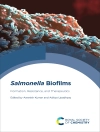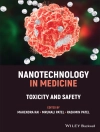Pollution is one of the most serious issues facing mankind and other life forms on earth. Environmental pollution leads to the degradation of ecosystems, loss of services, economic losses, and various other problems. The eco-friendliest approach to rejuvenating polluted ecosystems is with the help of microorganism-based bioremediation. Microorganisms are characterized by great biodiversity, genetic and metabolic machinery, and by their ability to survive, even in extremely polluted environments. As such, they are and will remain the most important tools for restoring polluted ecosystems / habitats. This three-volume book sheds light on the utilization of microorganisms and the latest technologies for cleaning up polluted sites. It also discusses the remediation or degradation of various important pollutants such as pesticides, wastewater, plastics, PAHs, oil spills etc. The book also explains the latest technologies used for the degradation of pollutants in several niche ecosystems. Given its scope, the book will be of interest to teachers, researchers, bioremediation scientists, capacity builders and policymakers. It also offers valuable additional reading material for undergraduate and graduate students of microbiology, ecology, soil science, and the environmental sciences.
สารบัญ
Chapter 1: Bioremediation of Industrial Pollutants.- Chapter 2: Bioremediation of Metals, Metalloids and Non-metals.- Chapter 3: Fungal Mediated Bioremediation of Heavy Metal Polluted Environment.- Chapter 4: Biological Decolorization and Degradation of Synthetic Dyes: A Green Step towards Sustainable Environment.- Chapter 5: Bioremediation of Waste Gases and Polluted Soils.- Chapter 6: E-Waste and its Hazard Management by Specific Microbial Bioremediation Processes.- Chapter 7: Current Methods of Enhancing Bacterial Bioremediation of Pesticide Residues in Agricultural Farmlands.- Chapter 8: Mechanism of Actions involved in Sustainable Ecorestoration of Petroleum Hydrocarbons Polluted Soil by the Beneficial Microorganism.- Chapter 9: Biosorption: An Ecofriendly Technology for Pollutant Removal.- Chapter 10: Synergistic and Aantagonistic Effects of Microbial Co-culture on Bioremediation of Polluted Environments.- Chapter 11: Enzymes-Oriented Strategies to Mitigate Polluting Agentsfrom Environment.- Chapter 12: Non Aqueous Catalysis-A Way Forward for the Intermediation of Phenolic Environmental Pollutant Bisphenol A.- Chapter 13: Nanoparticles Mediated Adsorption of Pollutants- A way forward to Mitigation of Environmental Pollution.- Chapter 14: Nano-Bio remediation Application for Environment Contamination by Microorganism.- Chapter 15: Biosorption and Bioaccumulation of Pollutants for Environmental Remediation.
เกี่ยวกับผู้แต่ง
Dr. Deepak G. Panpatte has been working as a research scholar for the past 9 years. His main research interest is in agriculturally beneficial microorganisms, such as biofertilizers, biopesticides and biodegraders. He has also pioneered the development of fortified biocontrol bacterial consortiums with phyto-extracts for the management of phytopathogenic nematodes and fungi. He has received 5 international conference awards for his research, 1 award for Best Ph.D., and the Rastiya Gaurav Award for outstanding contributions to agriculture. He has published 14 research papers, 5 books & 16 book chapters with Springer, 1 practical manual, 33 popular articles and 2 editorials. He is also an editorial board member for several respected national and international journals.
Dr. Yogeshvari K. Jhala is an Assistant Professor with 11 years of teaching and research experience. Her main research interest is in agriculturally beneficial microorganisms such as biofertilizers, biopesticides and biodegraders. She was the first researcher worldwide to report on 5 unique strains of methanotrophic bacteria. She has received the All India Best Research Award and Young Faculty Award for her outstanding research on methanotrophic bacteria. Her publications include 17 research papers, 5 books, 12 book chapters, 2 teaching manuals, 24 popular articles and 2 editorials.












